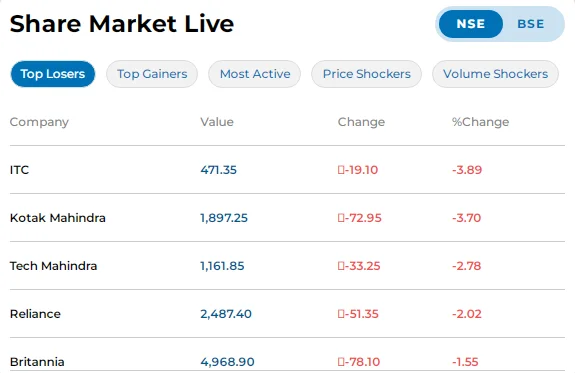
Buying and selling currencies on the foreign exchange market with the intention of profiting is known as Forex trading, sometimes referred to as foreign exchange trading or FX trading. Forex trading concentrates on the exchange rates between various currencies, as opposed to typical stock trading, which involves buying and selling company shares. The steps involved in forex trading are listed below:
- Pairs of currencies are traded while trading foreign exchange. A currency pair is made up of two different currencies, the first of which is referred to as the “base currency” and the second as the “quote currency.” The amount of the quote currency required to buy one unit of the base currency is represented by the value of a currency pair.
- Forex trading utilises bid and ask pricing, just like other financial markets. The price at which traders can sell base currency is the bid price, and the price at which they can acquire base currency is the ask price. The “spread” is the distinction between the ask and bid prices.
- Participants in the Forex market include banks, financial institutions, governments, businesses, and retail dealers, among others. These individuals take part in transactions to satisfy a range of needs, including speculative, investment, and global trade needs.
- Leverage: Trading forex frequently enables traders to employ leverage, allowing them to manage a greater position size with comparatively little capital. Although leverage has the ability to improve earnings, it also raises the risk of greater losses, so traders should use prudence.
- Due to the global nature of currency trading, the Forex market is open twenty-four hours a day, seven days a week. trade possibilities are offered by this ongoing trade cycle at various periods across the world.
- Exchange rates are affected by a number of variables, including interest rates, geopolitical events, market mood, economic indices (such as GDP, inflation, and unemployment), and unemployment rates.
- Trading Techniques: Day traders, swing traders, and position traders are just a few of the trading techniques used by forex market participants. These tactics entail differing amounts of risk and various holding periods for positions.
- Risk management: In Forex trading, risk management is essential. To reduce possible losses on trades, traders frequently employ strategies like placing stop-loss orders.
- Profit and Loss: In forex trading, a trader makes money when they sell a currency pair for more money than they paid for it. If the selling price is less than the purchasing price, however, a loss results.
- Online trading platforms are offered by forex brokers and are used to perform currency trading. These platforms provide order execution capabilities, technical indicators, charting tools, and real-time price quotes.
It’s critical to remember that Forex trading is extremely risky and not recommended for all investors. Because currency markets are so unpredictable, it’s easy to sustain substantial losses. Before engaging in actual Forex trading, traders should educate themselves, practise on demo accounts, and carefully examine their risk tolerance.
How Important Forex Trading in Stocks?
Stock trading and Forex trading are two separate types of financial trading that concentrate on various asset classes. Despite the fact that both are significant elements of the global financial market, they have diverse functions and distinctive qualities. The significance of Forex trading and stock trading are contrasted as follows:
1.Target Market:
Exchange of currencies is a component of forex trading. International commerce, investment flows, geopolitical developments, and economic indicators are its main drivers. With a daily trading volume that significantly outpaces that of the stock market, the FX market is the biggest and most liquid financial market on the planet.
Stock Trading: Stock trading entails the purchasing and selling of ownership shares in corporations. It gives people and organisations the chance to invest in and make money off of the success of particular businesses.
2.Purpose:
Forex Trading: Forex trading is crucial for promoting global investment and trade. It enables cross-border currency conversion for both corporations and private persons.
Trading in stocks: Trading in stocks gives businesses a way to raise money for development and growth. Additionally, it gives investors the chance to benefit from capital growth and dividends, which contribute to a company’s success.
3.The world economy
currency Trading: The interactions between various nations and the larger global economy are reflected in the currency market. Trade balances, interest rates, and overall economic stability are all impacted by exchange rates.
Trading in stocks: Economic factors, industry trends, and the performance of specific companies all have an impact on stock markets. They provide information on the state of particular industries and sectors.
4.Liquidity:
Forex Trading: The massive liquidity of the forex market is a result of both its huge trading volume and the involvement of numerous market participants, such as central banks, financial institutions, businesses, and individual traders.
Trading in stocks: While stock markets are typically liquid, liquidity can change according on a company’s size, the number of outstanding shares, and market conditions.
5.Risk and Gain
Forex Trading: Due to currency volatility, Forex trading entails a significant level of risk. Both rising and falling markets can be profitable for traders, but there is also a major risk of losing money.
Trading stocks: Trading stocks entails risk as well because individual stocks are based on a variety of variables, including corporate performance, market mood, and industry and sector trends. Risk can be managed by diversification and diligent research.
6.Financial Profile:
Forex Trading: Short-term traders, speculators, and people looking to profit from changes in currency prices frequently prefer forex trading.
Stock Trading: A variety of investors, including long-term, day, value, and income-focused investors, are drawn to the stock market.
In conclusion, stock trading and forex trading both have significant impacts on the world’s financial system. While stock trading offers chances for people and institutions to invest in businesses and take part in their growth, forex trading is essential for international trade and the exchange of currencies. The decision between the two is influenced by a person’s financial objectives, level of risk tolerance, and investing strategy.
How do I Start Trading Forex?
Starting a forex trading account requires numerous procedures. To get you started, consider the following general advice:
- Educate Yourself: It’s important to comprehend the forex market, how it operates, and the fundamental terms before you start trading. You may build a strong foundation with the many internet tools, articles, videos, and courses available.
- Select a Reputable Broker: Choosing a trustworthy forex broker is essential. Find a broker that is overseen by a reputable financial regulator in your nation. Make sure they have an easy-to-use trading platform, aggressive spreads, and helpful customer service.
- Establish a Trading Plan: Write out your goals, risk tolerance, preferred trading approaches, and the amount of capital you’re willing to risk in a detailed trading plan. A well-thought-out plan can assist you in maintaining discipline and successfully managing hazards.
- Utilise a Demo Account to Practise Trading: Most brokers provide demo accounts that let you practise trading with fictitious funds. This is an excellent method to become familiar with the platform, test your ideas, and build confidence without using actual money.
- Create a Trading Strategy: Create a trading strategy based on your knowledge of the market and your understanding of it. Entry and exit points, guidelines for risk management, and a strategy for examining market movements should all be part of this.
- When you’re prepared to trade with actual money, start with a small account. By doing this, your risk is reduced as you acquire experience.
- Risk management: Use effective risk management strategies to safeguard your financial resources. This includes placing stop-loss orders to reduce possible trade losses.
- Keep up with market developments, geopolitical developments, and economic news that may affect currency exchange rates. Keep up with factors affecting the FX market.
- Start Trading: Put your trading plan into action by placing trades. Be patient and refrain from acting on impulse.
- Learn from Experience: As you accumulate knowledge, keep a record of your transactions and their results. If you want to keep becoming better at trading, analyse both your wins and losses.
- Maintain Your Discipline: Trading foreign exchange requires emotional control. Keep your trading plan in mind and try not to let emotions influence your decisions.
- It’s never too late to learn more about the dynamic FX market. Keep an open mind to learning more and modifying your tactics as necessary.
Advantages and DisAdvantages of Forex Trading
Of course, the following are both benefits and drawbacks of Forex trading:
Advantages of Forex Trading
- Liquidity: With a huge trading volume, the forex market is the biggest and most liquid financial market on the planet. Due to this liquidity, traders can enter and leave positions without experiencing major price changes.
- Due to the nature of currency trading, which is conducted globally, the forex market is open twenty-four hours a day, seven days a week. This gives traders the freedom to take part in the market at various times.
- Leverage: Forex brokers frequently provide leverage, enabling traders to manage larger positions with a smaller investment. This may boost prospective earnings, but it also raises the possibility of bigger losses.
- Diverse Trading options: The forex market offers a wide variety of currency pairs to trade, giving traders with different methods and preferences plenty of options.
- modest Costs: The bid-ask spread makes up the majority of the transaction costs in forex trading, which are comparatively modest. Trading typically carries no commissions or other costs.
- Accessibility: Individual retail traders can join in forex trading with a comparatively minimal initial commitment thanks to internet trading platforms.
- Trading in the currency market offers the opportunity to earn from both rising and declining markets. The capacity to go long (buy) or short (sell) a currency pair is the reason behind this.
- Forex trading gives traders knowledge of the state of the world economy, enabling them to profit from global events and economic trends.
DisAdvantages of Forex Trading
- Extreme Risk: The forex market’s extreme volatility exposes traders to large losses as well as significant profits. These hazards may be amplified by leverage.
- Complexity: Economic data, geopolitical developments, and interest rate choices are just a few of the complicated aspects that go into forex trading. A thorough understanding of these factors is essential for successful trading.
- Emotional factors: The fast-paced nature of forex trading and the possibility of generating large wins or losses quickly might cause traders to make emotional decisions that may have a detrimental effect on their trading results.
- Lack of Regulation: The forex market is less regulated than traditional exchanges because of its decentralised structure. Traders may be exposed to shady schemes and dubious brokers as a result.
- Overtrading: The forex market’s accessibility and 24-hour nature can encourage overtrading, in which traders place impulsive and frequent trades that could reduce profits.
- Learning Curve: Learning about the market, trading methods, and risk management takes a substantial amount of time and work if you want to succeed consistently in forex trading.
- Unpredictable Events: Market moves can be abrupt and unpredictable as a result of geopolitical events, unexpected economic pronouncements, and other unanticipated reasons.
- False Promises: Some internet platforms or educators may make exaggerated claims of simple, guaranteed returns, which can cause individuals to make poor choices and incur losses.
Conclusion for forex trading
In conclusion, for those looking to participate in the dynamic world of international currency exchange, Forex trading presents both chances and problems. The high liquidity, accessibility around-the-clock, opportunity for leverage, and variety of trading chances are all benefits of Forex trading. Both rising and declining markets can be profitable for traders, and the market offers useful information about the state of the world economy.
But it’s crucial to approach Forex trading cautiously and with a thorough grasp of its drawbacks. Due to market volatility and leverage, there is a significant level of risk that must be carefully managed. Market sentiment, geopolitical events, and the intricacy of economic data all need that traders devote time to education and ongoing learning.
In Forex trading, emotional restraint is essential because rash decisions can have detrimental effects. The absence of regulation in the decentralised Forex market also emphasises the importance of conducting careful research and choosing reliable brokers.
Success in Forex trading needs a combination of knowledge, strategy, and dedication. It is not a quick route to earnings that are guaranteed. Aspiring traders should enter the Forex market with reasonable expectations, a clear trading strategy, and a dedication to continuous development. The possibility of substantial losses must be weighed against the possibility of financial gain. Anyone considering entering the world of Forex trading must use ethical trading methods, practise risk management, and never stop learning.
FOR MORE INFO CLICK THIS SITE:https://learningsharks.in/
FOLLOW OUR PAGE:https://www.instagram.com/learningsharks/?hl=en















